
The Setouchi Triennale Art Festival takes place every three years on the art islands of Japan’s Seto Inland Sea–and this year is a festival year! Let’s check it out!
Previously listed in our top 8 Japan events to look forward to in 2016, this year’s festival promises to bring some of the world’s best contemporary art to Japan. Being Japan, the festival is defined by seasons, of course, and while the spring art festival has just ended, the summer and autumn festivals are still to come. In addition, you can still see a lot of art between seasons as there are permanent exhibitions as well as several art museums that are open year-round.
The extravaganza involves over 200 exhibits on a network of a dozen islands in the Seto Inland Sea, also called the Seto Naikai (or Setouchi, from which the name of the festival is taken). If you’ll be spending a few days island-hopping during the festival, you might want to get a three-day ferry pass (2,200 yen or US$20) which can save you a bit of money depending on how many islands you’re planning on going to. You’ll also want to buy a “Setouchi Triennale 2016 Passport” (5,000 yen or US$46) which entitles you to a one-time free entry into most of the exhibits.
▼ Setouchi Triennale 2016 “Passport”
We managed to fit in 25 exhibits although many of them were outdoor exhibits which you don’t really need a passport to see. But the pass is valid for the rest of the year which gives it additional value.
We spent an inspiring three days visiting Teshima, Ogijima and Naoshima. We started our trip from Takamatsu (Kagawa Prefecture) on the Shikoku side of the Inland Sea and ended at Uno (Okayama Prefecture), on the Honshu side.
Note: Many of the indoor exhibits prohibit photo-taking. It can be confusing because sometimes there is only one sign, and you may not see it even if you’re looking for it. I asked before I entered each exhibit and am displaying photos only where I was specifically given permission—there’s lots more to see!
Takamatsu Port 高松港
At Takamatsu Port there is art, just to get you into the mood.
▼ Shinji Ohmaki –“Liminal Air-core-”
▼ Lin Shuen Long–“Beyond the Border…”
Tip: If you’re heading to several different islands, you’ll find yourself back at Takamatsu to change ferries. This also means there will be layovers.
Teshima 豊島 (ferry from Takamatsu 1,330 yen one way)
▼ Pipilotti Rist–“Your First Color”
This exhibit is reminiscent of the very first “Art House Projects” on Naoshima which took old abandoned Japanese houses and used them as venues for art. In this one, Rist bathes the entire house in a purplish pink color and projects an image onto the ceiling from below which you look through broken roof beams to see. Notice how even traditional items such as a basket take on a different feeling when their color is changed.
▼ Ryue Nishizawa and Rei Naito–Teshima Art Museum
This museum, which includes indoor and outdoor elements, was created by an artist and architect team. The museum grounds is set among a background of rice terraces. Unfortunately, the museum is not included in the passport, but with the passport you do get a discount entry fee of 1,000 yen (US$9) which gets you into the outdoor exhibit, the cafe and the gift shop also.
▼ Christian Boltanski–“Les Archives Du Coeur”
Boltanski’s exhibit is divided into two separate experiences, both involving the listening to heart beats. In the first room you can experience the resounding pulsing of a heart beat syncopated with a pulsating light. In the second room, you can sit while looking out at the Inland Sea while listening to heart beats through ear phones. You can also record and register your own heart beat–for 500 yen (US$4.50) extra–for people to listen to.
Tip: Teshima is a big island, so don’t waste time galumphing around trying to find the sites; take the bus instead. The buses go clockwise and counter-clockwise around the island, and you can hop on and off wherever you want. It’s 200 yen (US$1.80) each time you ride the bus, no matter the distance.
Ogijima 男木島 (ferry 510 yen one way)
Next we went to Ogijima, our favorite island because it has lots of exhibits and you can walk to them all. We stayed overnight here too, which allowed us to get night photos as well as early morning shots.
▼ Jaume Plensa–“Ogijima’s Soul”
We were the first people in the morning to see some of the more popular exhibits.
▼ Keisuke Yamaguchi–“Walking Ark”
▼ Takeshi Kawashima–“Kaleidoscope Black and White”
Imagine walking into a house completely covered with these black and white designs! That’s what you’ll find in Kawashima’s exhibit. Even the floor and Japanese doors were covered in it.
▼ Mayumi Kuri–“Memory Bottle”
▼ Haruki Takahashi–“Sea Vine”
You really have to see this to appreciate it. The artist has made an entire network of vines out of porcelain and then hung the entire fragile contraption from the ceiling so it appears to float. If you look closely, you can see the thousands of little strings hanging from the ceiling that are attached to the vines.
▼ Oh, and did we mention that Ogijima is a cat island?
▼ You’ll find the adorable, but shy, island felines hiding here and there.
Tip: There are two places to stay on Ogijima. Madoka Minshuku overlooks Ogijima Port. Sakura Minshuku is on the other side of the island, a bit of a walk if you have luggage, but close to “Walking Ark.”
Naoshima 直島 (from Uno 290 yen, from Takamatsu 520 yen)
▼ Yayoi Kusama–“Red Pumpkin”
This pumpkin, by one of Japan’s most famous contemporary artists, Yayoi Kusama, is the first thing you’ll notice when coming into Miyanoura Port on the ferry. It usually commandeered by happy children who like to run around and play in it.
▼ Sou Fujimoto–Naoshima Pavillion
▼ Yayoi Kusama–“Pumpkin” (located on a different part of the island).
This intriguing work is one of the most famous outdoor exhibits on Naoshima. Luckily, it is located in a less accessible area of the island (near Benesse House and the Benesse Hotel), so it is not always inundated with tourists. However, it’s still a good idea to get there early in the morning if you want the pumpkin all to yourself or you don’t want to get photobombed by other posing tourists. Indeed, I’ve never seen so many people hug or kiss a pumpkin before! If you must kiss it, you might want to bring some anti-bacterial wipes…
▼ Yuki Iiyama–“100 Living Tales”
“Apparently, on Ishishima dogs come along on the fishing boats. It seems that they follow their owners.”
This collection takes place inside Miyanoura Gallery 6, a converted pachinko parlor. When you walk inside, the lighting and haunting quietness of the place makes you feel like the building is leading a long-awaited, quiet retirement. Together with the building you can reflect on the way things used to be on the islands by reading the collection of short stories pinned up on pieces of paper. These missives, anywhere from one sentence (“A tanuki stole my shoes.”) to one paragraph long, are terse, pithy reflections on life on the islands. Unfortunately, this exhibit ended April 17. But don’t despair: the next exhibit in the same building for the summer is “Paying a Courtesy Call on the Incumbent Mayor by all His Predecessors in History.” For this, the artist (Yoshinori Niwa), invited itako shamans to Naoshima to talk to the dead. Hmmm! July 18-Sept. 4, 2016.
Tip: When going to Naoshima, you’ll most likely leave from Uno Port (Okayama). The last ferry from Miyanoura Port back to Uno is 7:15pm, which means you can get some sunset pictures before returning to the mainland. At night, the lights really change the atmosphere inside the Red Pumpkin.
Uno Port 宇野港
▼ Atsushi Ozawa–“Beyond the Last Stop”
These bicycles aren’t just exhibits–you can also rent them. Just try to resist doing a wheelie while perched upon this ridable art!
▼ Esther Stocker–“JR Uno Minato Line Art Project”
Even the train station has been done up to be artsy. Look for more of these along the JR Mito Line as they add more stations throughout the summer as a preamble to get travelers into the art groove before arriving in Uno. “The station is on your left. You can’t miss it.”
Tip: There is a new guesthouse catering to English speakers called Uno Port INN, which is next to the train station and across from Uno Port.
The Setouchi International Art Festival is always expanding and now even includes the performing arts. We’re really looking forward to that!
The festival is carried out over 108 days and three seasons for 2016: spring (March 20–April 17), summer (July 18–September 4) and autumn (October 8–November 6).
Copyright©RocketNews24
Photos: HumorUs Guide to Japan






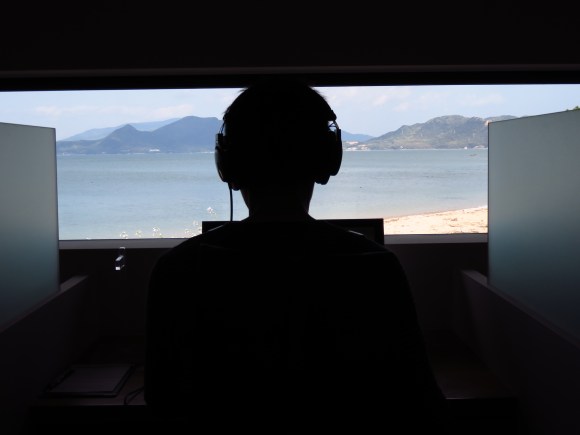



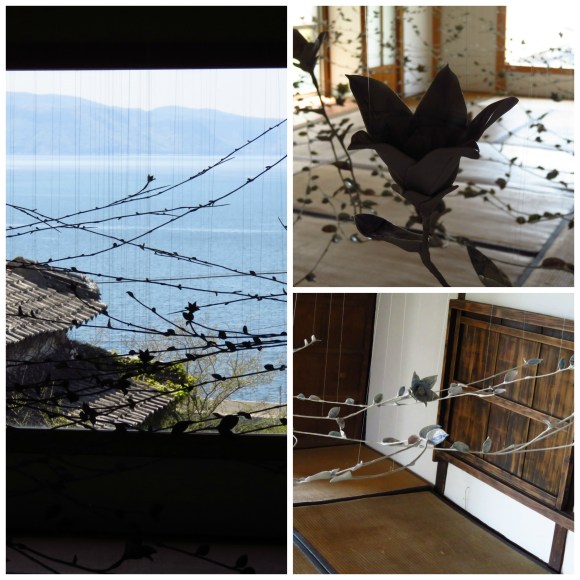
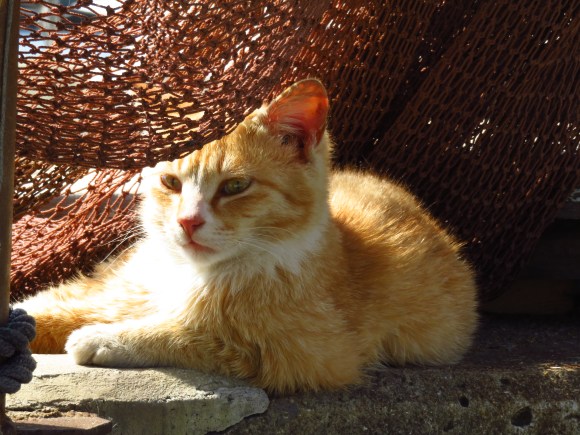


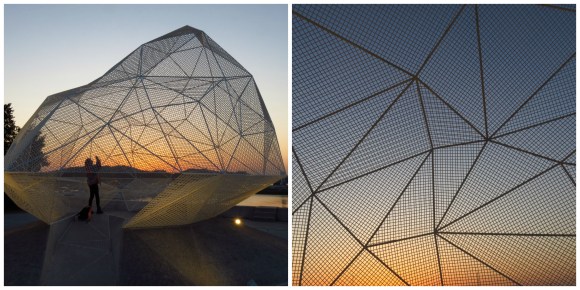




 We deeply regret spending five hours on this artistic Japanese island (we should have spent more)
We deeply regret spending five hours on this artistic Japanese island (we should have spent more) Yayoi Kusama’s Yellow Pumpkin washed away during typhoon in Japan
Yayoi Kusama’s Yellow Pumpkin washed away during typhoon in Japan Why French tourists are flocking to a tiny island of 230 people in Japan’s Inland Sea
Why French tourists are flocking to a tiny island of 230 people in Japan’s Inland Sea A heavenly trip to Japan’s Demon Island in the Seto Inland Sea【Photos】
A heavenly trip to Japan’s Demon Island in the Seto Inland Sea【Photos】 The new Simose Art Museum in Hiroshima houses a floating, futuristic surprise next to the sea
The new Simose Art Museum in Hiroshima houses a floating, futuristic surprise next to the sea Ramen restaurant’s English menu prices are nearly double its Japanese ones, denies discriminating
Ramen restaurant’s English menu prices are nearly double its Japanese ones, denies discriminating Our 52-year-old pole dancing reporter shares his tips for achieving your New Year’s exercise goal
Our 52-year-old pole dancing reporter shares his tips for achieving your New Year’s exercise goal Starbucks Japan releases new Frappuccino and latte for Valentine’s Day
Starbucks Japan releases new Frappuccino and latte for Valentine’s Day Say hello to Japan’s new stationmaster cat!【Video】
Say hello to Japan’s new stationmaster cat!【Video】 What’s inside Starbucks Japan’s fukubukuro lucky bag for 2026?
What’s inside Starbucks Japan’s fukubukuro lucky bag for 2026? Bamboo trees vandalized near Kyoto’s Fushimi Inari shrine, foreign graffiti prevalent
Bamboo trees vandalized near Kyoto’s Fushimi Inari shrine, foreign graffiti prevalent Princess Mononoke magnets return just in time to treat yourself to awesome anime decorations
Princess Mononoke magnets return just in time to treat yourself to awesome anime decorations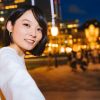 When is the right time for a love confession in Japan?
When is the right time for a love confession in Japan? Cosplay costume room tour by Japan’s number-one cosplayer Enako is an eye-opener【Video】
Cosplay costume room tour by Japan’s number-one cosplayer Enako is an eye-opener【Video】 Nearly one in ten young adults living in Japan isn’t ethnically Japanese, statistics show
Nearly one in ten young adults living in Japan isn’t ethnically Japanese, statistics show 10 times to avoid traveling in Japan in 2026
10 times to avoid traveling in Japan in 2026 Japanese beef bowl chain Sukiya’s 2026 Smile Box lucky bag basically pays for itself
Japanese beef bowl chain Sukiya’s 2026 Smile Box lucky bag basically pays for itself Top Japanese cosplayer Enako returns to Comiket after 6 years, creates mayhem with admirers
Top Japanese cosplayer Enako returns to Comiket after 6 years, creates mayhem with admirers Umamusume anime girl plushie recalled for having parts she absolutely should not have【Pics】
Umamusume anime girl plushie recalled for having parts she absolutely should not have【Pics】 We ate sushi made from Japan’s most expensive tuna ever【Taste test】
We ate sushi made from Japan’s most expensive tuna ever【Taste test】 Starbucks Japan ready to get Year of the Horse started with adorable drinkware and plushies【Pics】
Starbucks Japan ready to get Year of the Horse started with adorable drinkware and plushies【Pics】 7-Eleven Japan starts new temporary luggage storage service in over 300 branches
7-Eleven Japan starts new temporary luggage storage service in over 300 branches Disillusionment at Tsukiji’s tourist-target prices led us to a great ramen restaurant in Tokyo
Disillusionment at Tsukiji’s tourist-target prices led us to a great ramen restaurant in Tokyo Starbucks teams up with 166-year-old Kyoto doll maker for Year of the Horse decorations【Photos】
Starbucks teams up with 166-year-old Kyoto doll maker for Year of the Horse decorations【Photos】 Tokyo’s Tsukiji sushi neighborhood asks tour groups to stay away for the rest of the month
Tokyo’s Tsukiji sushi neighborhood asks tour groups to stay away for the rest of the month Japan may add Japanese language proficiency, lifestyle classes to permanent foreign resident requirements
Japan may add Japanese language proficiency, lifestyle classes to permanent foreign resident requirements Lacquerware supplier to emperor of Japan and Pokémon team up for new tableware
Lacquerware supplier to emperor of Japan and Pokémon team up for new tableware Starbucks Japan releases new zodiac chilled cup drink for 2026
Starbucks Japan releases new zodiac chilled cup drink for 2026 Survey asks foreign tourists what bothered them in Japan, more than half gave same answer
Survey asks foreign tourists what bothered them in Japan, more than half gave same answer Japan’s human washing machines will go on sale to general public, demos to be held in Tokyo
Japan’s human washing machines will go on sale to general public, demos to be held in Tokyo We deeply regret going into this tunnel on our walk in the mountains of Japan
We deeply regret going into this tunnel on our walk in the mountains of Japan Studio Ghibli releases Kodama forest spirits from Princess Mononoke to light up your home
Studio Ghibli releases Kodama forest spirits from Princess Mononoke to light up your home Major Japanese hotel chain says reservations via overseas booking sites may not be valid
Major Japanese hotel chain says reservations via overseas booking sites may not be valid Put sesame oil in your coffee? Japanese maker says it’s the best way to start your day【Taste test】
Put sesame oil in your coffee? Japanese maker says it’s the best way to start your day【Taste test】 No more using real katana for tourism activities, Japan’s National Police Agency says
No more using real katana for tourism activities, Japan’s National Police Agency says Starbucks Japan reveals new sakura drinkware collection, inspired by evening cherry blossoms
Starbucks Japan reveals new sakura drinkware collection, inspired by evening cherry blossoms Updated cherry blossom forecast shows extra-long sakura season for Japan this year
Updated cherry blossom forecast shows extra-long sakura season for Japan this year Human washing machine pods coming to Japanese hotels【Photos】
Human washing machine pods coming to Japanese hotels【Photos】 8 Japan-related events to look forward to in 2016!
8 Japan-related events to look forward to in 2016!
Leave a Reply